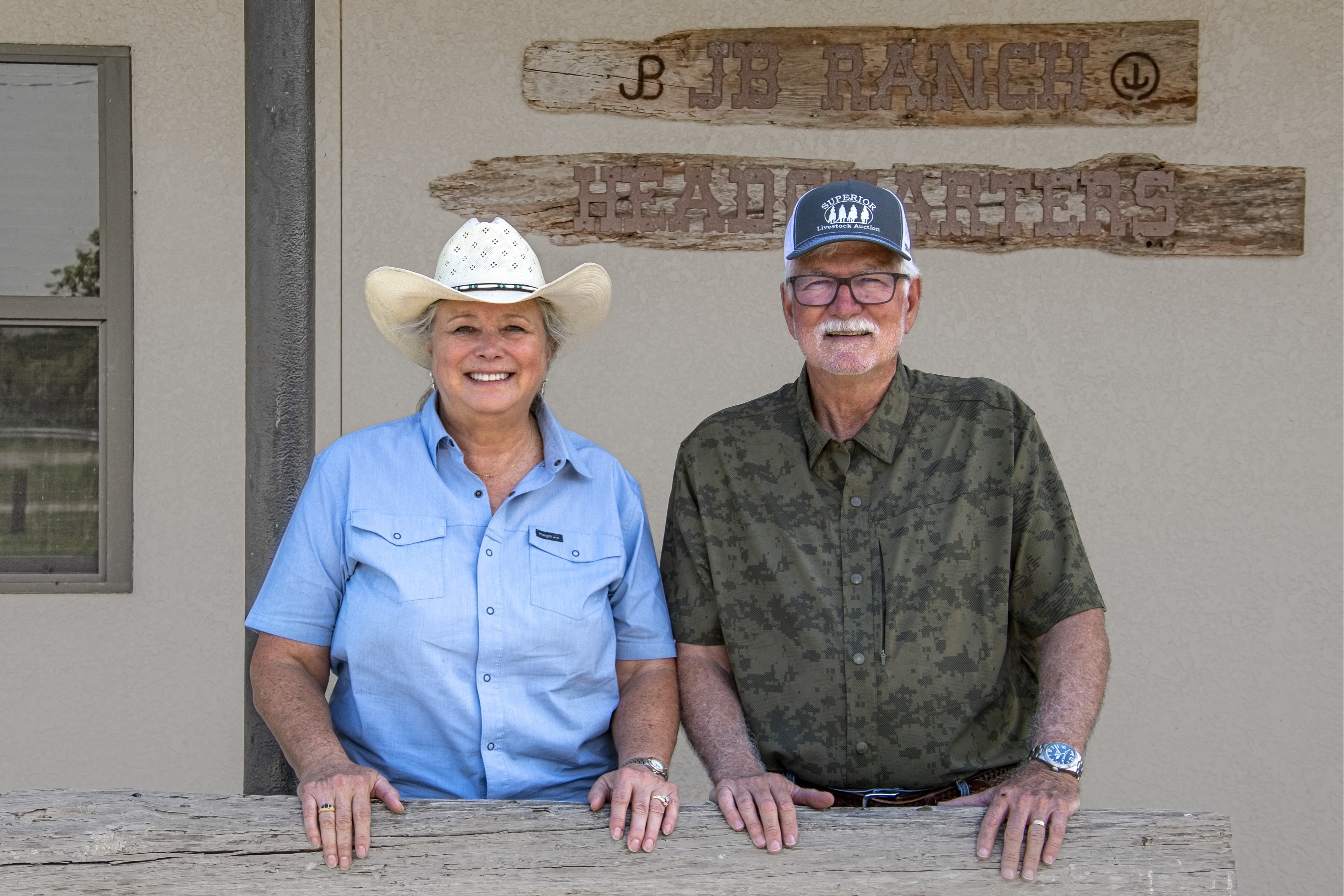Connect with Range & Pasture:
Curbing Invasives on the Ranch

On Florida’s JB Ranch, Russell and Liesa Priddy make management decisions with species diversity and ranch sustainability top of mind.
On Florida’s JB Ranch, Russell and Liesa Priddy make management decisions with species diversity and ranch sustainability top of mind.
Imagine heading out the door each morning to check on your cattle knowing you also might encounter fire ants, apple snails, iguanas, pythons, coyotes, vultures, panthers and bears. Oh, my!
Certainly, every cattle producer in every part of the country faces unique day-to-day challenges, but the ecosystem is especially diverse – if not unusual – in southwestern Florida, says Liesa Priddy, who owns and operates JB Ranch with her husband, Russell, near Immokalee, Florida. A third-generation cow-calf operation, JB Ranch provides important habitat for more than 20 protected animal species, including panthers, the Florida state animal. The Priddys take their role in stewarding this important ecosystem seriously.
“Our goal is quite simple: To ensure that the natural resources under our care are improved and maintained for the benefit of all living things that depend on the land and to do so in an economically viable way,” Liesa explains. “We utilize a variety of practices to make that happen.”
Florida seems to be a magnet for all things invasive: plants, insects, reptiles, mollusks, etc. Of the various types of invasives found at JB Ranch, the most visible — and most expensive to manage — are the plants. Brazilian peppertree, followed by cogongrass and Old World climbing fern, poses the greatest environmental threats. Brazilian peppertree tops the list because of how widespread it is, how large it grows and how hard it is to remove. Plus, it crowds out native vegetation, taking over valuable grazing areas.
Removal techniques include mechanical methods and herbicides. Both require extensive use of employees, equipment and materials. JB Ranch has invested hundreds of thousands of dollars over the last 10 years to rid it of this dangerous invasive plant. The Priddys say they are within a few years of managing Brazilian peppertree with spot treatments.
“We mechanically remove the large, mature trees,” Russell says. “But that soil disturbance sprouts a mass of new seedlings.” Following up within 12 months and treating new peppertree seedlings using a 1% solution of Remedy® herbicide has produced excellent results.
“We scout all of our pastures every year and spot treat as needed,” he adds. The strategy has worked well and requires less herbicide. Using a tractor-powered 130-gallon spray rig, they can cover any of their pastures in one to three days.
Resource management goals are intertwined and inseparable, and the Priddys prioritize the removal of invasive species and water integrity. Overall, they have reduced invasive plant species by 90%. In addition to mechanical removal and herbicides, they rely on prescribed burning and grazing management. Water quality has improved with the use of control structures and solar wells.
In other areas, selective, targeted applications of glyphosate are helping the Priddys get a handle on cogongrass. JB Ranch also works closely with Hailey Addison, their local Corteva Range & Pasture Specialist to develop management plans for the ranch. The next step, Russell says, likely will include applications of GrazonNext® HL herbicide to control other weeds competing with native grasses.
“Having Hailey ride across the ranch with us to learn about what we’re currently doing and what our next goals are over time, and then writing prescription recommendations for us, has been extremely helpful,” Russell says.

Taking an active role in stewardship and sustainability can help reassure consumers as their concerns about the quality of their meat and where it comes from continues to grow, the Priddys say. Management decisions are never made without keeping ranch sustainability in mind.
In 2023, Environmental Stewardship Award Program (ESAP) recognized JB Ranch as a regional award winner due to the Priddys improving habitat and following best management practices. Established in 1991, ESAP celebrates outstanding land stewards in the cattle industry. Regional ESAP winners come from every corner of the country and undertake stewardship efforts unique to their environment, landscape and resources. Corteva Agriscience proudly represents the longest-tenured sponsor of this prestigious industry program.
“As ranchers, it is our responsibility to provide a product that meets consumers’ needs,” Liesa says. “Success of the ranch depends on how well it can satisfy consumer purchasing preferences. The public wants food producers, not just ranchers, to implement environmentally friendly management procedures.”
GrazonNext® HL has no grazing or haying restrictions for any class of livestock, including lactating dairy cows, horses (including lactating mares) and meat animals prior to slaughter. Label precautions apply to forage treated with GrazonNext HL and to manure and urine from animals that have consumed treated forage. Consult the label for full details. GrazonNext HL is not registered for sale or use in all states. Contact your state pesticide regulatory agency to determine if a product is registered for sale or use in your state. GrazonNext HL is not for sale, distribution or use in New York state and San Luis Valley of Colorado. State restrictions on the sale and use of Remedy® and Remedy® Ultra apply. Consult the label before purchase or use for full details. Always read and follow label directions.